Determine True String VOC
True String VOC Test Overview
The following procedure closes the MCIs (also referred to as bypassing the MCIs) to check the Voc of the string, confirming that the string has been wired correctly.
Note
Perform this testing after wires
have been pulled through but before they have been landed at the Powerwall+ / Tesla
Solar Inverter.
Required Tools:
- Klein ET600 Tester in 1000V mode
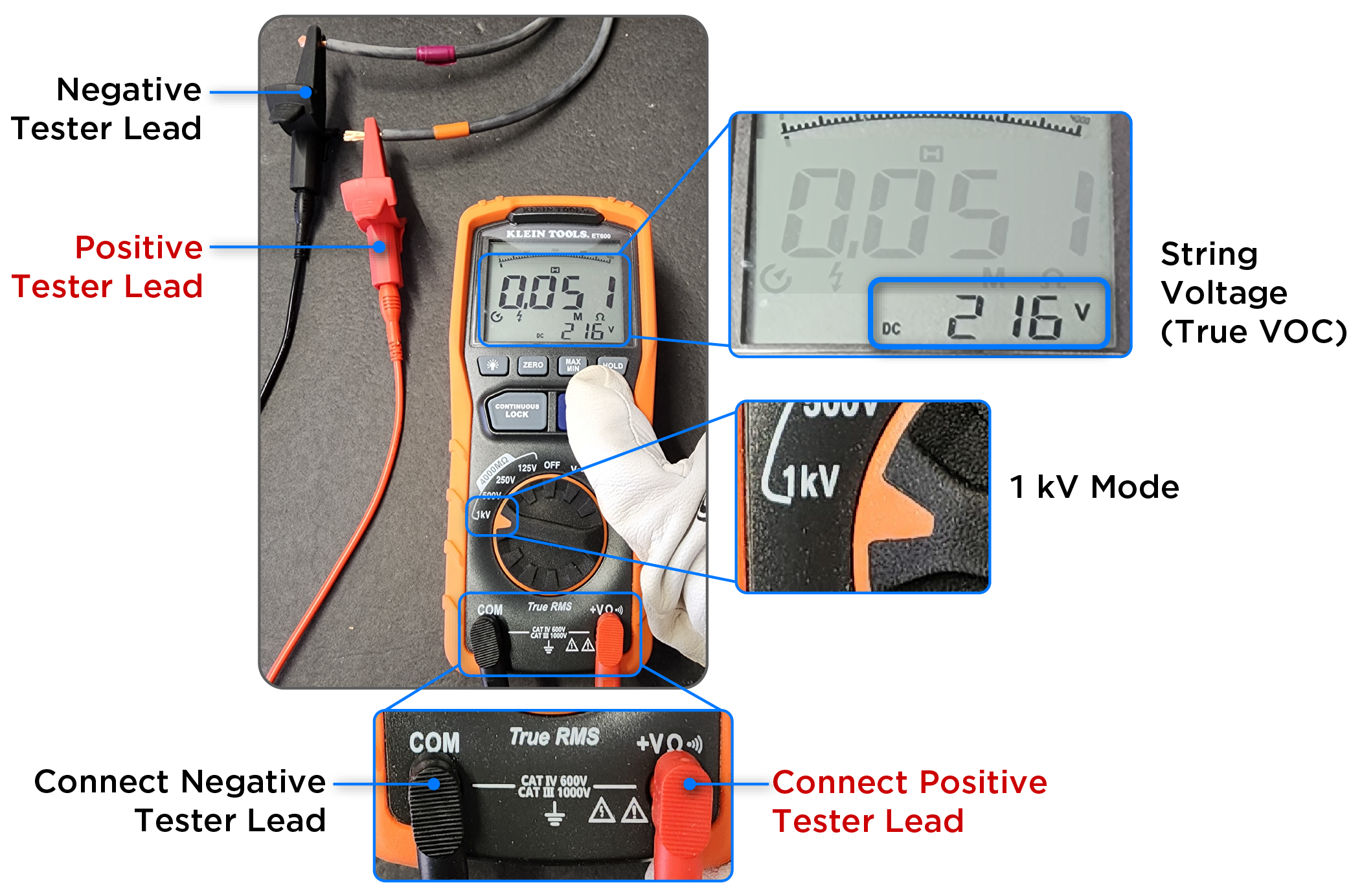
- Safely shut the system down:
- Initiate Rapid
Shutdown:
- For Powerwall+, push the System Shutdown Switch if one is present, then turn the Enable switch OFF.
- For Tesla Solar Inverter, turn the AC disconnect OFF if one is present, then open the Solar Inverter circuit breaker.
- Open the Powerwall+ / Tesla Solar Inverter circuit breaker (turn OFF) if not already done.
- Remove the DC Isolator connector.
Figure 2. Tesla Solar Inverter DC Isolator 
- Wait 30 seconds before
proceeding with any work.WarningConfirm Powerwall+ / Tesla Solar Inverter is de-energized before proceeding. Confirm the breaker is open (OFF) and solar production is disabled in Tesla One.
- Initiate Rapid
Shutdown:
- Plug the positive and negative
meter tester leads into the meter. If you have a combination megger and
multi-meter, make sure the tester leads are plugged into the ports for
insulation testing.
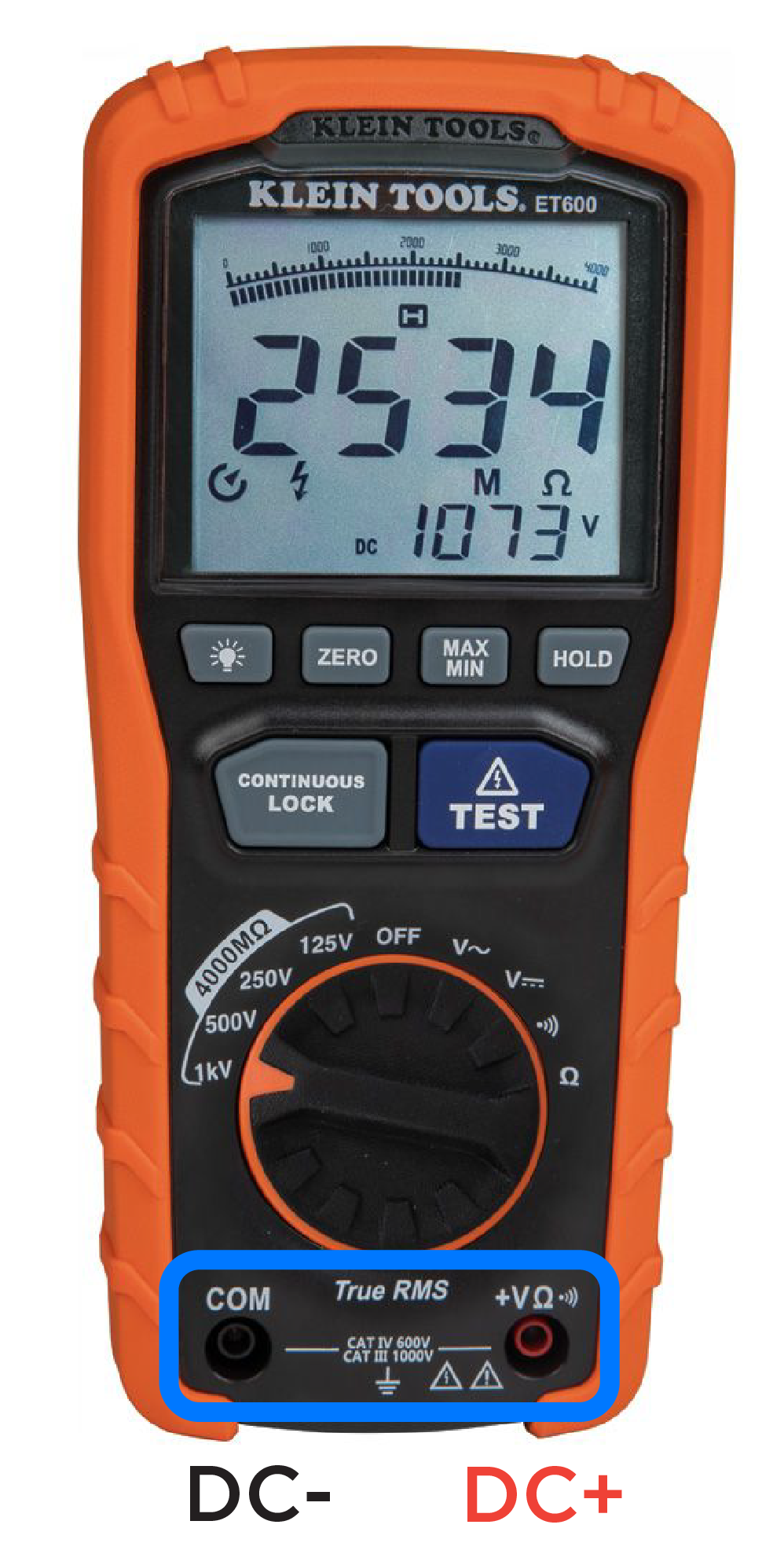
- Set the tester to 1000V
mode.
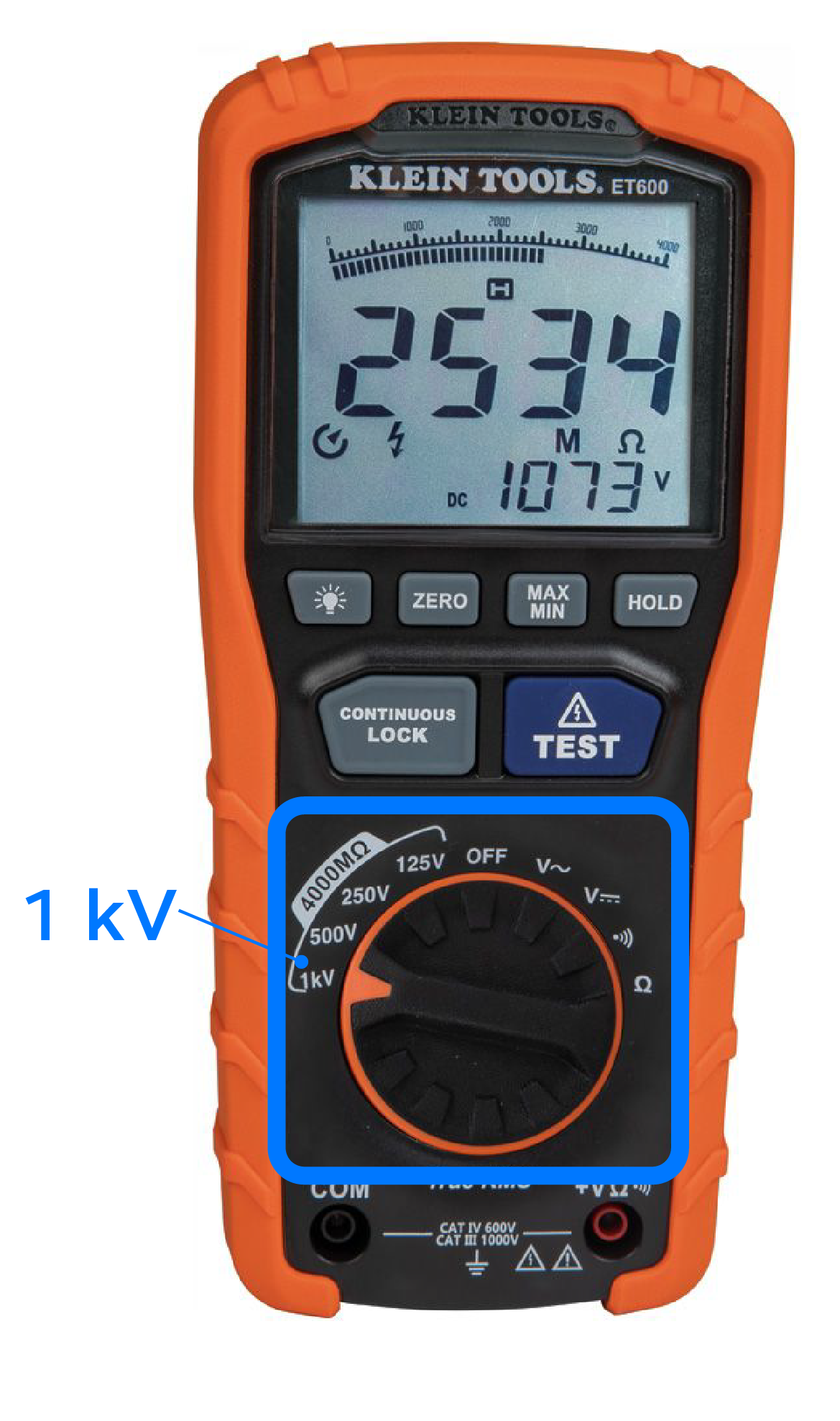
- Disconnect both (positive and
negative) conductors to test a string. The conductors can be disconnected from
the inverter (on the ground) or on the roof.NoteParalleled strings must be tested independently. This must be done on the roof, and can be done by undoing Y-connectors or removing jumpers inside the combiner box.NoteFor very short strings of two modules, test the short string together with a string that passes the test. Short strings may not be able to be tested by themselves.
- Connect the positive tester lead (red) to the positive conductor.
- Connect the negative tester lead (black) to the negative conductor.
Figure 3. Testing Conductors on the Ground (at Inverter) 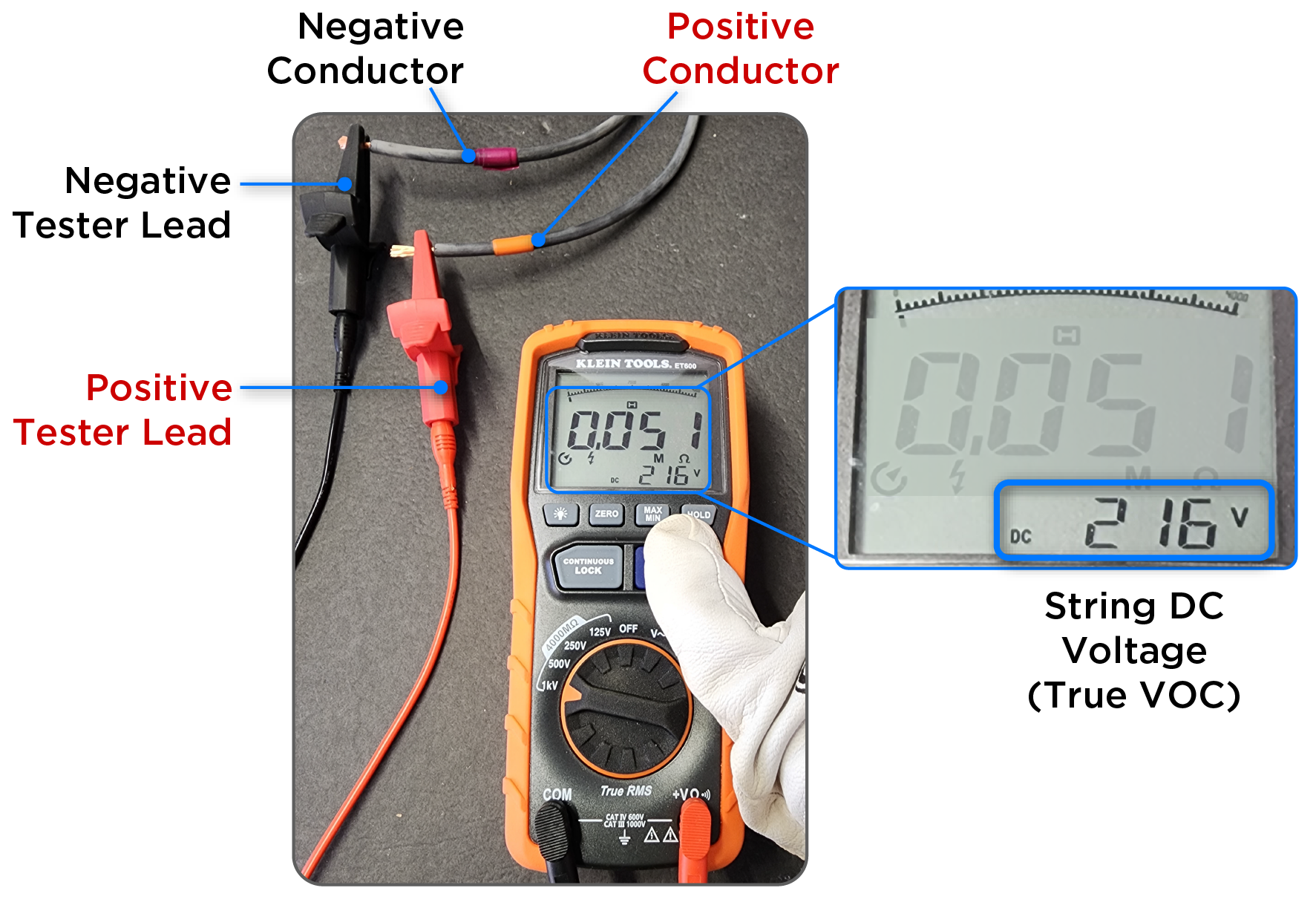
Figure 4. Testing Conductors on the Roof 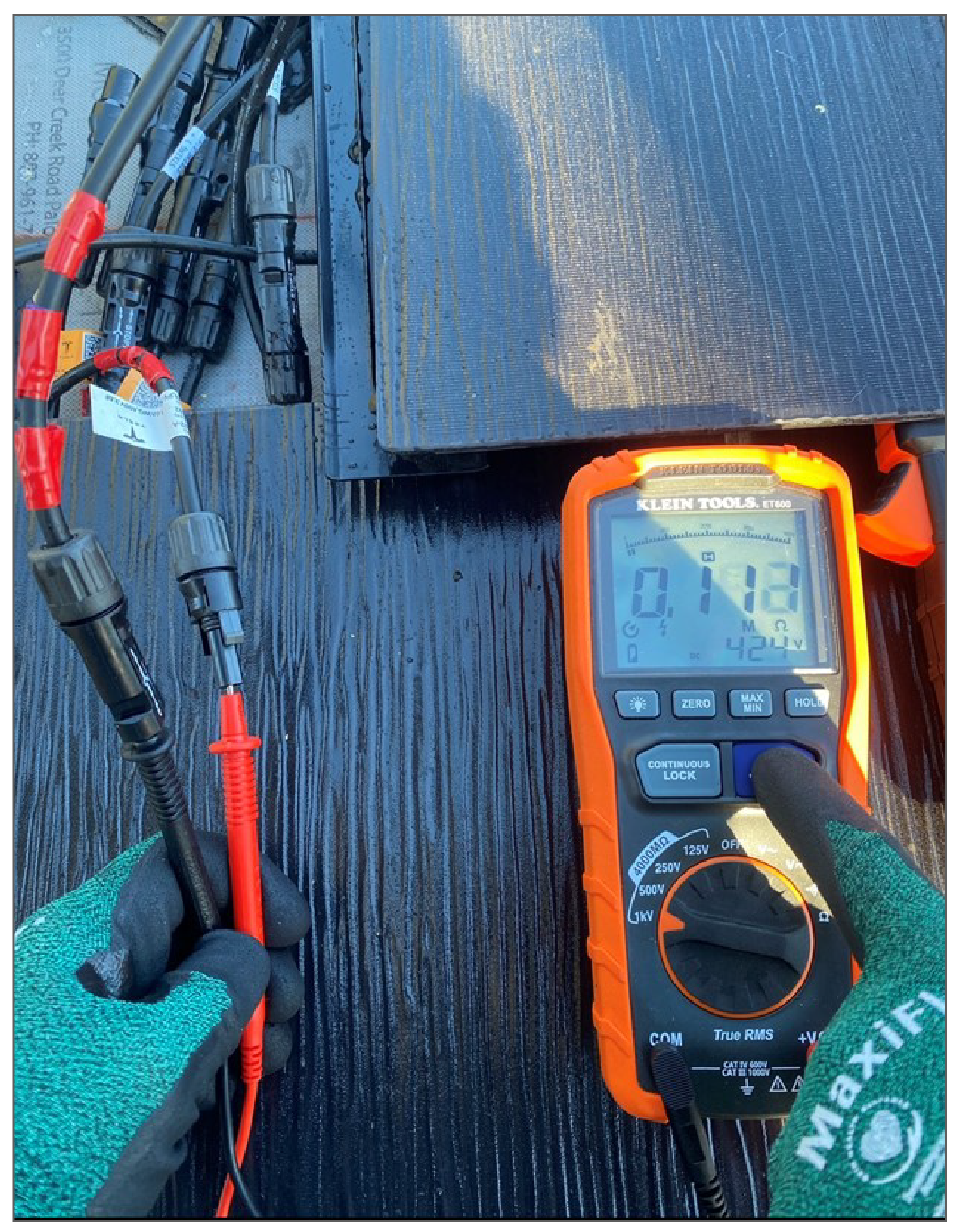
- Push the TEST button on the tester until the reading stabilizes.
- If any string does not display the expected string voltage (see planset), inspect the wiring on the roof to ensure it matches the design.
- If all wiring has been performed
correctly, look for evidence of damage that may be causing the string to under
perform:
- Inspect where the wires exit conduit, as nicked wires may occur here
- Check for wires pinched by mounting hardware
- Look for evidence of
damaged modules:
- Microcracks
- Signs of water intrusion
- Module leads are bent at sharp angles